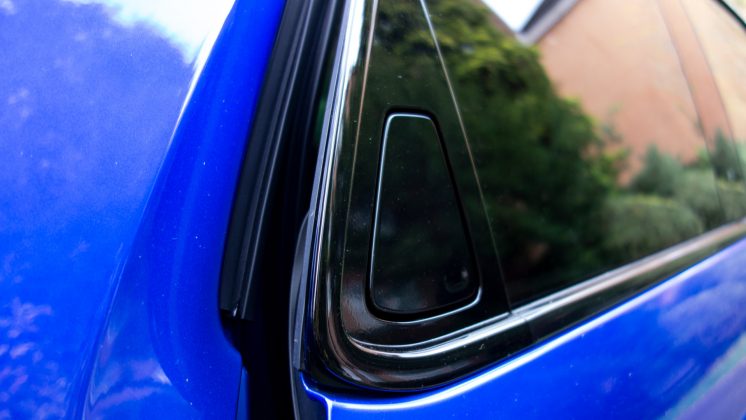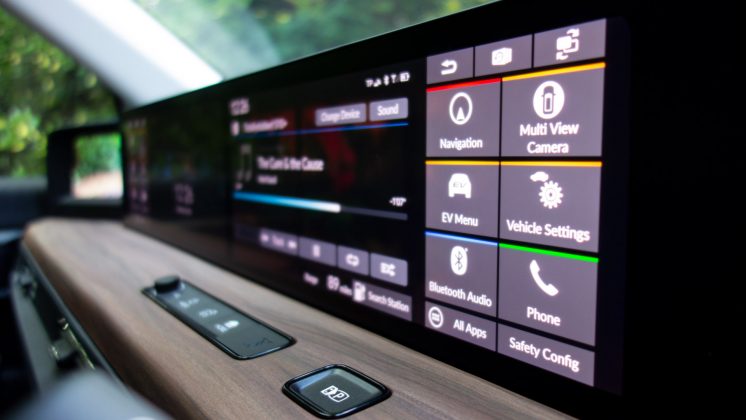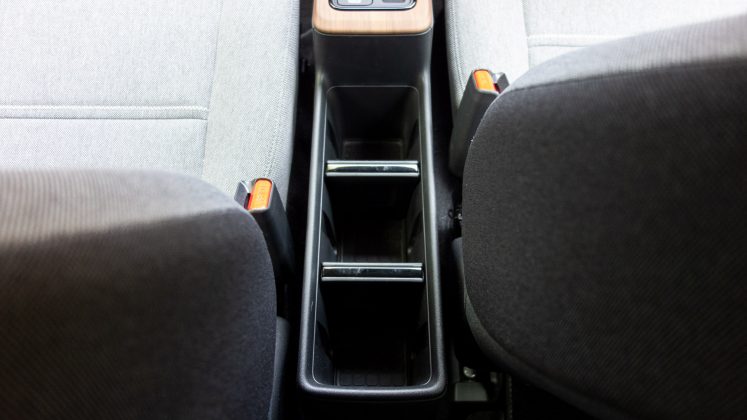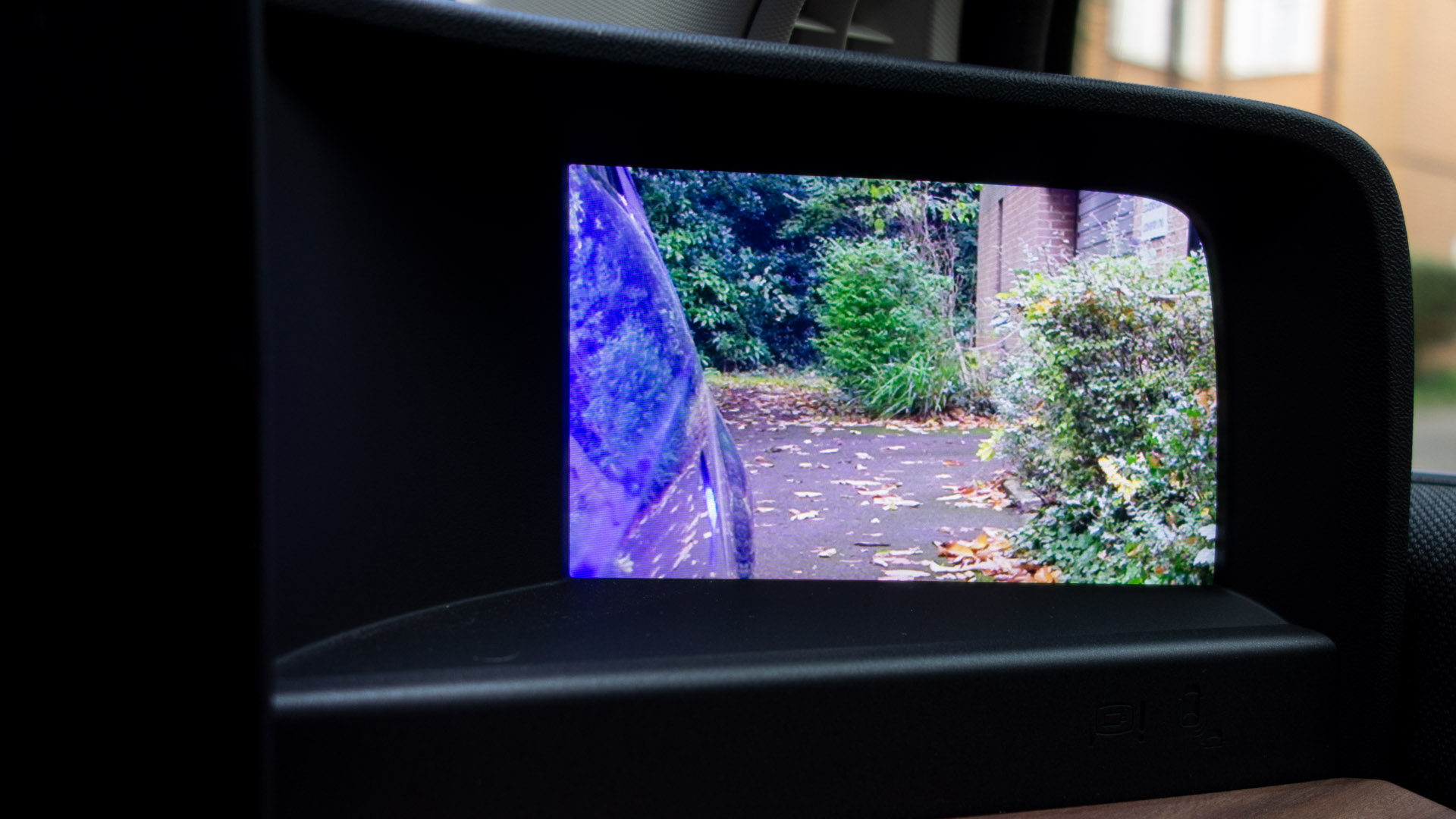Honda has been manufacturing internal combustion engines for decades, wherein 2018, it was touted as the world’s largest producer of engines. With the increase of subsidies and demand for electrified vehicles, the Japanese manufacturer’s sights have been swayed toward creating an all-electric car.
At the 2017 International Motor Show (IAA) that took place in Germany, the automaker revealed its Urban EV Concept. In late 2019, a production version – named the Honda e – was revealed and its availability soon became a reality.
Shocking as it might seem, this isn’t the company’s first rodeo in vehicles that house an all-electric powertrain; its first attempt can be traced to 1988, where the limited production ‘EV Plus’ came to market in 1997. The automaker then released a flurry of all-electric and hybrid vehicles, where most models weren’t as technologically advanced as its main competitors.
The Honda e, however, is aimed at changing people’s perceptions, with it being one of the most technologically advanced consumer vehicles on the market. However, with competition at an all-time high, TotallyEV seeks to find if it can compete with its new and long-standing rivals.
If you’d prefer to watch a review of the Honda e, head on over to our YouTube channel.
Honda e price & competition
Since its release, the Honda e has seen a price increase. It originally started from £26,160, with the Advance trim coming in at £28,660; at the time of writing, it’s now £1,000 dearer. Aside from other factors, this in large, comes from the UK government reducing its Plug-in Car grant from £3,500 down to £3,000.
As standard the Honda e comes with the following options:
- Full-width dual screens
- Leather steering wheel
- Smart entry & start
- Front heated seats
- CCS and Type 2 charging ports
- LED Daytime running lights
- Sky roof
- Pop-out door handles
- Rear privacy glass
- Side Camera Mirror System
- 16” alloy wheels
For an additional £2,500, the Honda e Advance (on review) ups the ante with a tweaked electric motor, which outputs 113 kW (151 hp) of power – you’ll get to 62mph in 8.3s. An improvement over the regular model, which has 100 kW (151 hp) of power and manages to get to 62mph in 9s, instead. However, depending on which wheels are selected, the Advance’s driving range drops from a claimed 137 miles down to 125 miles with the 16″ alloys.
Elsewhere, the Advance adds the following options as standard:
- Centre Camera Mirror System
- Heated Steering Wheel
- Heated Front Windscreen
- Honda Parking Pilot
- 230 Volt outlet
- Choice of 16” or 17” alloy wheels
- Around View Monitor
- Premium Audio with 8 speakers
- Blind Spot Monitor
- Cross Traffic Monitor
When it comes to its all-electric competitors, there are a few to consider: the roomier Nissan Leaf starts from £26,845, and the Renault Zoe from £26,495; the stylish Mini Electric at £24,900; the bite-sized Volkswagen e-up! starts from £20,555 with its near-identical sibling, the Seat Mii Electric coming in at £19,800; the cheapest and most compact EV on the market, the Smart fortwo coupé, will set you back £17,550.
Read next: Volkswagen e-up! review: A bite-sized electric car
Honda e exterior review
From the exterior, the Honda e looks nothing like its rivals; it has got a unique design that’s never been used or seen in a mass-produced vehicle. By not following a ‘traditional’ design template, it’s sure to divide opinion.
We quite like its quirky look as it stands out from the rest of the crowd. It has personality with its circular headlights and taillight and side-view cameras instead of relying on less aerodynamically designed side view mirrors. Honda claims this bolsters efficiency by 3.8% and minimises wind noise, too. The door handles are also concealed for this reason; they automatically pop out when you approach the vehicle or unlock it from afar via the remote.
From the side, the vehicle retains a cute look with 16″ or more sportier-looking 17″ alloys coming as standard. At the front, there are CCS and Type 2 charging ports concealed under a black-coloured flap.
As for the exterior finish, ‘Charge Yellow’ comes as standard, however, the four other colours are at a £550 premium. Platinum White Metallic, Crystal Black Pearl, Modern Steel Metallic and the pictured Crystal Blue Metallic are your options.
There are a few other exterior accessories one can add, too: the £600 Illumination Pack adds doorstep garnishes and console illumination; the £850 U.R.B.A.N. Pack Black & Blue adds blue accents around the vehicle; while the £850 U.R.B.A.N. Pack Black adds extra protection mouldings around the exterior of the vehicle.
Read next: Mini Electric review: Style over substance?
Honda e interior review
The Honda e’s exterior might divide opinion, but the interior of the vehicle is what could only be referred to as a serene Japanese design. It’s supremely elegant with a wooden finish by the dashboard and an uplifting light grey fabric upholstery, where the interior cabin gives you a sense of space and tranquillity despite it being a small-sized cabin.
The focal point, however, is the multitude of displays that dominate the dashboard, which will undoubtedly fulfil anyone’s inner geek. There are five in total: an 8.8″ instrument cluster, two 6″ panels by the front doors that act as a dedicated display for side view cameras (more on this below), and two elongated 12.3″ touchscreen infotainment screens that reside at the centre of the dashboard. The latter can be customised to your heart’s content, where ‘apps’ have the ability to be interchanged between the two 12.3″ screens at the touch of a button. There’s no haptic feedback but the panels’ touch sensitivity makes light work of navigating through Honda’s extensive set of menus.
Buy a car phone mount on Amazon (Affiliate)
To connect up to the infotainment system, there’s a USB socket located under its physical climate controls, where the vehicle also supports Android Auto and Apple Car Play. Using the former with both the Google Pixel 5 and Samsung Galaxy S10+, we found its integration with Android’s in-car operating system to be flawless; one of the best we’ve seen to date. Aside from mirroring your smartphone’s display, the car will also cleverly communicate navigation data via Google Maps to the instrument cluster – most manufacturers disable this function unless you’re using their in-house navigation system. It’s certainly refreshing to see.
One can wirelessly connect over Bluetooth, too. The Honda e is, however, limited to the lowest-quality SBC codec only. Some manufacturers offer the slightly more premium AAC codec, but it would have been fitting to see the Honda support the higher-quality aptX, aptX HD or LDAC codecs, too.
When it comes to audio, the Honda e comes with six speakers as standard with 180 Watts of power. The Advance trim adds a 45W centre speaker and a 75W sub that’s located under the rear seats, taking the tally up to eight speakers and with the addition of an external amp takes total power up to 376 Watts. If you’d like to hear how the eight-speaker configuration performs, watch our dedicated review on YouTube.
If you want to take things a step further, you can connect up a games consoles to the infotainment system via HDMI – pretty radical for a vehicle. The port resides next to the USB input that’s used for a wired smartphone connection. Here you’ll also find another USB port for charging and a 12V cigarette lighter. In the Honda e Advance, there’s even a 3-pin 230-volt outlet enabling to fast-charge a smartphone or a laptop.
As for the centre console, Honda has done away with a traditional gear lever, and has opted instead for a few conveniently placed buttons. It does take a little while to get used to but they are otherwise very intuitive to use. Here you’ll also find a button to initiate one-pedal driving, a mode you’ll have to initiate each time you step inside the cabin. A drive mode selector resides next to the e-brake and brake hold button, too. Further down, there are two USB sockets for rear occupants.
Speaking of buttons, there’s a selection of media controls on the steering wheel and ones to initiate Lane Keep Assist System (LKAS) and Adaptive Cruise Control (ACC), too. However, it is slightly odd that there’s no play/pause button for media; you’ll need to tap on the screen, instead. Along the dashboard there’s a physical volume knob, and buttons to turn off the audio, change the illumination of the screens and send you to the home screen. On the Advance model, a button dedicated to initiating Honda Parking Pilot is also found here.
Read next: Audi A8 audio review: Is the Bang & Olufsen system worth it?
Honda e storage review
Despite the sense of spaciousness you get when entering the cabin, the Honda e is otherwise limited in its ability to store larger-sized goods. The boot only has 171 litres of capacity and with the seats down extends to 571 litres.
By comparison, the Nissan Leaf has a whopping 435 litres with the seats up; pop them down and you’ll have 1,176 litres of usable space. In fact, all of Honda e’s rivals put it to shame: Renault Zoe (338/1,225 litres); VW e-up! (251/951 litres); Seat Mii Electric (251/923 litres); Mini Electric (211/731); even the Smart fortwo coupé has more usable storage with the seats up (260/350 litres).
Still, you’ll manage to squeeze in small luggage at the back, and with the seats propped down, a large suitcase. Within the cabin, there’s a compartment by the centre console, which can be customised thanks to a set of movable plastic sliders, and there’s space within each of the car’s four doors to place a 500ml bottle. A retractable cupholder can also be found by the centre console, near the drive mode buttons.
Read next: MG ZS EV review: An affordable all-electric SUV
Honda e comfort review
As with all of the smaller-sized hatchbacks, headroom is limited at the back. The Honda e is indifferent – 6-foot (182cm) individuals will fit, but taller-sized individuals might find themselves henned in.
This, however, doesn’t apply to the two front seats, which are manually adjustable. As for legroom, it’s plentiful no matter where you choose to sit. Its four doors also make it far more practical to enter and exit the vehicle, as opposed to the Mini Electric, which is limited to two doors only.
Moving onto the seats, they’re supremely soft and yet will keep you firmly planted when the car is lobbed around country roads; the same couldn’t be said about the Mini Electric that opts for overly firm seats, instead.
Cabin noise is kept to a minimum, with the Honda e providing a serene environment that isn’t hindered by tyre noise or wind deflecting off the A-pillars. Having unconventional wing mirrors also helps the car’s aerodynamic performance and further minimises cabin noise.
Read next: Extreme E: The electric off-road racing series
Honda e performance review
When it comes to driving at speed around country roads, the Honda e has a lowered centre of gravity, which allows it to remain planted on the ground. No matter how hard you drive, you’ll find this hatchback grips the road unlike any other small-sized all-electric car on the market. In this department, its closest rival is the Mini Electric, which similarily feels like a driver’s car – there’s a real sense of connection with these two cars.
This, ultimately, is what sets the Honda e apart from the rest of the crop; it gives you a sense of joy each time you take the car out for a spin. In terms of performance, the motor (located beneath the rear boot) drives power to the rear wheels, where it dispatches 113 kW (151 hp) of power, netting you a 0-62mph time of 8.3s in the Advance model. In our tests, using Racelogic’s Vbox Sport we managed to get this figure down to 7.83s, which frankly is pretty astonishing given the conditions were far from ideal; it was very wet. The regular Honda e, has 100 kW (151 hp) of power and will get to 62mph in 9s, instead.
On both models, top speed is limited to 90mph and you’ll have 315 Nm of readily-available torque at your beckoning call. Here, Honda offers two driving modes: Sport and Normal. The former improves throttle response and makes for a better driving experience.
Buy a car phone mount on Amazon (Affiliate)
What is similarily incredible is the car’s ridiculous turning radius, which sits at 4.3m at the wheels and 4.6m at the body. This makes for effortless manoeuvres, where it’s undoubtedly one of the easiest cars to drive within inner-city routes. The same could be said about parking the car, where its multitude of cameras and sensors make it a breeze to squeeze into a tight spot.
Speaking of which, the Honda e Advance has ‘Parking Pilot’, which can do the parking for you. It’s pretty responsive and makes it even easier to pull into a bay with no user interaction needed. Of course, doing it yourself will prove to be a lot quicker, but for those who are lazy or nervous, it’s a viable option.
When it comes to its side-view cameras, it bolsters the car’s safety credentials. Here, as a driver, you’ll have to peer less towards your wing mirrors as the 6″ displays housed within the cabin sit closer to you. The cameras can be adjusted and have a wide-angle mode making it easier to see your surroundings, although, this mode will crop the image by 50%.
In terms of safety systems, there’s a whole host of technologies that come included: Lane Keep Assist System (LKAS) does a good job in keeping the car within a lane – Road Departure Mitigation System (RDMS) also helps in this department; Collision Mitigation Brake System (CMBS) avoids collision by detecting when an object comes into close proximity of the vehicle; Adaptive Cruise Control (ACC) eases pressure on tedious commutes.
As for driving the car safely, the Honda e can be operated with one pedal, only. Activating the mode through a button found on the centre console lobs the car in its highest regenerative braking mode allowing you to limit or even eliminate touching the brake pedal altogether; the car will come to a standstill if you correctly factor in the vehicle’s ‘natural’ stopping distance.
The only caveat is that the one-pedal mode isn’t activated when you switch on the vehicle – it needs to be re-initiated each time you step inside and similarily will be lobbed to its maximum mode when you press the button. There are a few other levels of regenerative braking to choose from via the flappy paddles on the steering wheel.
Read next: Kia e-Niro review: The best all-electric SUV?
It’s all seemingly perfect until you start to realise the car has a limited driving range. With 16″ alloys, Honda claims up to 137 miles on the WLTP cycle, this figure decreases to 125 miles with the 17″ alloys found on the Advance, which is the combination on review.
In reality, we found the car managed between 80-90 miles in mixed driving conditions – a combination of inner-city routes, motorways and country roads. Its dismal performance puts it below any other all-electric cars we’ve tested and will certainly induce range anxiety for those that don’t solely stick to inner-city routes.
Thankfully, its 35.5 kWh battery pack accepts a rapid 50 kW input via its Combined Charging System (CCS) port, which allows the car to charge to 80% in 31 minutes. A full charge via a 7.4 kW Type 2 port will take around four hours, and a 3-pin 2.3 kW wall socket will take over 18hrs.
Read next: Audi e-tron review: Best premium all-electric SUV?
TotallyEV’s verdict on the Honda e
On the whole, there’s plenty on offer for both geeks and those who want to feel connected with the road they’re driving on; from its quirky looks to its raw untainted performance the car is a marvel.
The biggest sticking points, for us at TotallyEV, is its limited all-electric driving range and its small boot capacity. With the price of the Honda e starting from £27,160, the hatchback is one of the most expensive small-sized electric vehicles on the market, which makes it a tough sell given its shortcomings are fundamentally linked to the stigma surrounding EVs.
While style and technology aren’t at the forefront of some of its rivals, the Nissan Leaf (£26,845) and the Renault Zoe (£26,495) make for a more practical alternative. While Volkswagen’s e-up! (£20,555) and the Seat Mii Electric (£19,800) both offer a more affordable all-electric experience and yet manage to last around 140 miles on a single charge.
Ultimately, the buying decision is in your hands. Is the Honda e is your cup of tea? Let us know in the comments below or via social media; we’re on: YouTube, Instagram, Facebook, Twitter and LinkedIn.







































